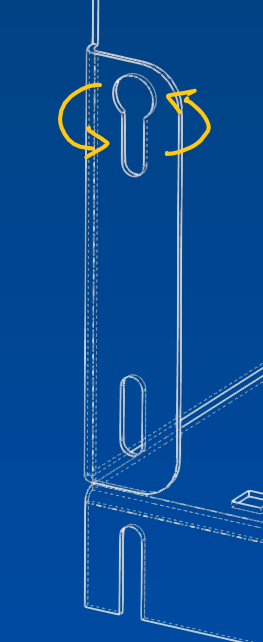Do you put a little drain oil on the heater? ![]()
But yes in principle it would help
Indeed, it is to be taken into account. But I imagine that there is already a gutter at the bottom of the porthole and that the blower is not directly pressed to the window anyway.
… This test is also possible with the tongue.

Peut-être aussi ne pas négliger l’influence de la vitesse du flux.
L’efficacité est un ratio entre la température et la vitesse du ventilo.
Je m’explique. Le ventilo dissipe la chaleur émise par la résistance, mais s’il souffle trop fort, la chaleur sera en fait dissipée avant que la résistance n’atteigne sa température max.
En réduisant la force de ventilation, la résistance monte plus haut en température et le flux en sortie est plus chaud.
Plus chaud mais il « va moins loin », mais il garde la vitre et l’air ambiant local plus chauds.
Another possible solution, without knowing if feasible, is to put the heater in contact with a mass with a good thermal conductivity (stainless steel) which will be in contact with the glass and will in turn heat it.
I've already tested the fan speed reduction. Yes, the outlet temperature is slightly higher, but this has not significantly improved the icing problem.
I agree on the ratio of air flow / resistance power, that's also why I want to increase the power of the resistance to have a better flow / temperature ratio.
Or easier to integrate, a pseudo double glazing:

It's a good idea but unfortunately not possible in this case. The porthole is a specific model with strict customer constraints that prevent the addition of plexiglass...
If the porthole does not use its image rights, you can film it with this kind of heating membrane.
Hello @Caosw78 ,
An obvious thing to start with: to defrost the window, you have to raise its temperature...
Under the conditions you indicate, the airflow at the outlet of the fan is at about 30°C, which is 10°C higher than the ambient air (assumed to be at 20°C).
This slight increase in temperature is due, among other things, to the high flow rate of the fan (170 m3/h). If this flow is halved, i.e. 85 m3/h, the temperature difference will theoretically be doubled, i.e. 20°C.
Another advantage is that the average speed of the airflow will be lower (2.6 m/s instead of 5.2 m/s in the first case), which promotes heat exchange between the air and the glass.
A frequency inverter on the fan's power supply could adapt its speed (?), and thus look for the optimal situation.
The illustration below shows a simulation of the airflow in both situations, with the same temperature scale.

Hi all
I have carried out several tests following your suggestions and I would like to give you feedback to get your opinions and advice.
Basic Surveys:
Air outlet temperature at full fan speed: 36°C.
Tests:
- Reduction of the air vent cross-section:
• Objective: To accelerate the airflow to better reach the top of the window.
• Result: Failed. The flow was faster, but frost appeared on the window.
- Increasing the air vent cross-section (as suggested):
• Objective: To allow a more uniform and better directed flow of air.
• Result: No more frost problems, but moisture has formed on the glass, and condensate has flowed to the floor.
• Proposal: I am thinking of printing a 3D baffle to better guide the air to the window. If the test is conclusive, this deflector would be made of stainless steel. What do you think?
- Reducing fan speed:
• Objective: To increase the air outlet temperature.
As a result, the temperature went from 36°C to 46°C, but the flow was insufficient to reach the top of the porthole. The frost has therefore reappeared.
What do you think of these tests and the results?
Is the design of a deflector relevant to better direct the airflow?
Attached is a step file of the assembly
Thank you again for your help!
Hublot_Chauffant.STEP (14.6 MB)
Off topic but just to remove a doubt, shouldn't this hole be in the other direction?

If! Small design error ![]()
It is to be settled in the southern hemisphere ![]()
Wouldn't drying the air in the cold room be the solution?
It is also beneficial to the facilities and safety
Wouldn't a cold room at 20° be the solution?
Thank you for your answers. To answer my initial question, I finally ordered a more powerful coil to increase the temperature, as well as a fan with a higher flow rate if needed.
Thank you for your feedback and wish you a good weekend! ![]()
This will increase your room for manoeuvre, but don't rule out a dimensioned exit.
Have a good weekend.